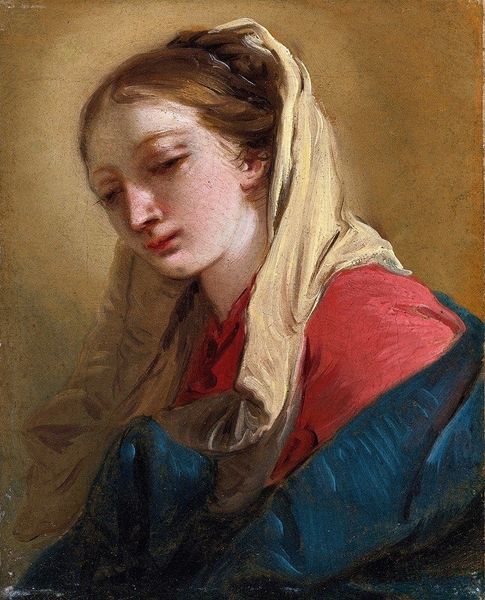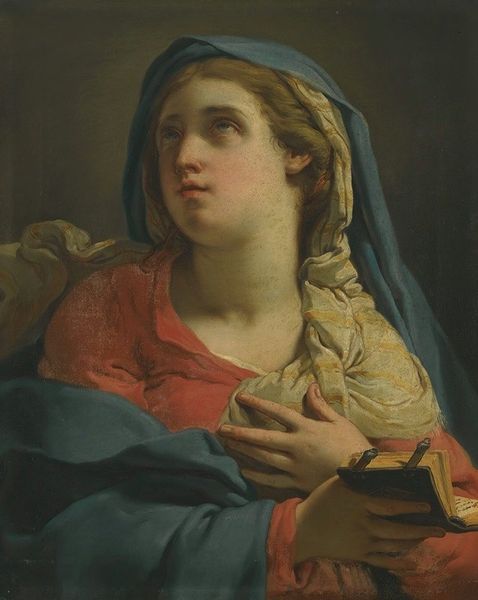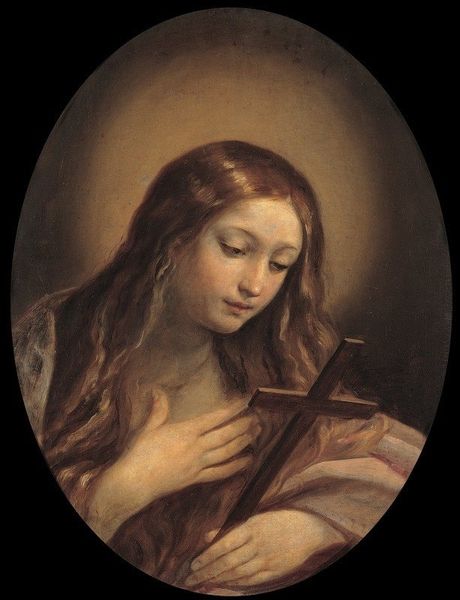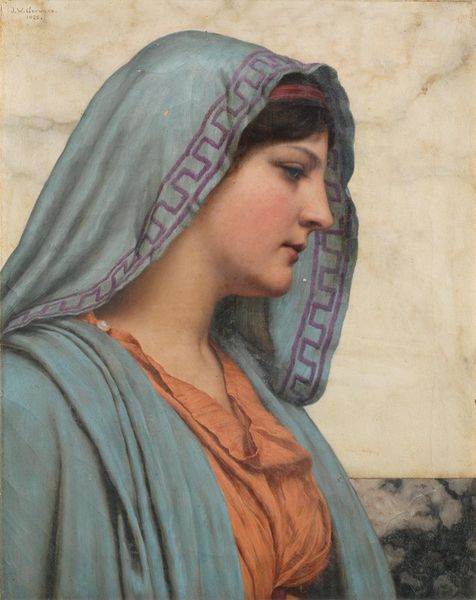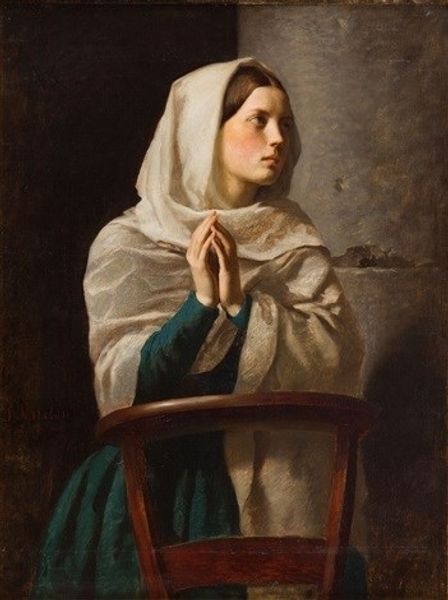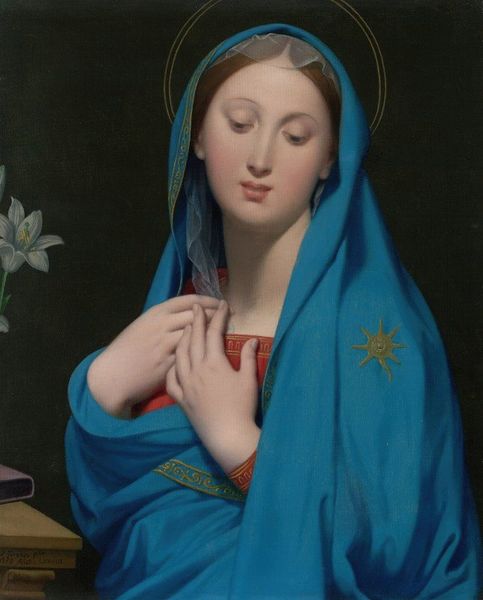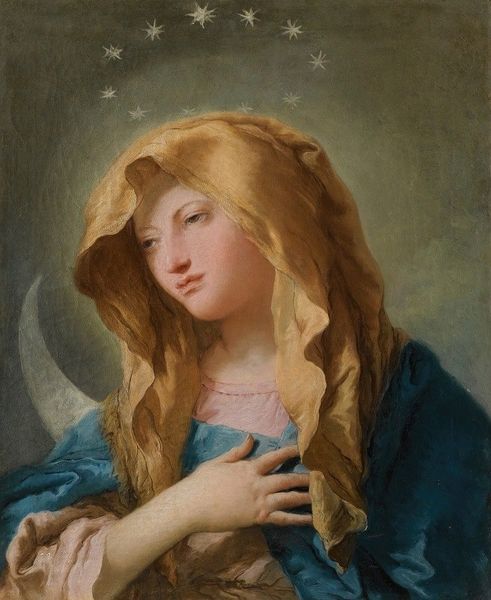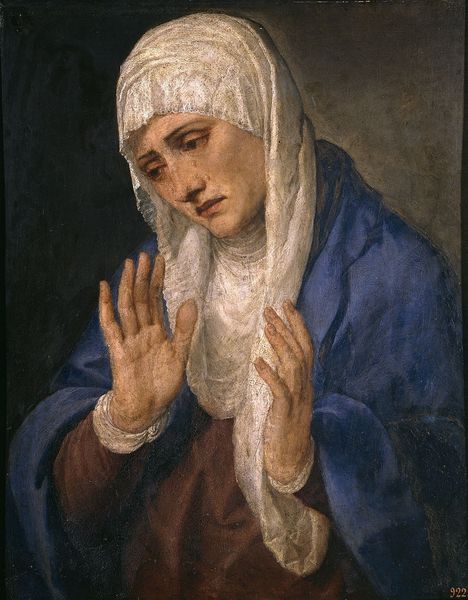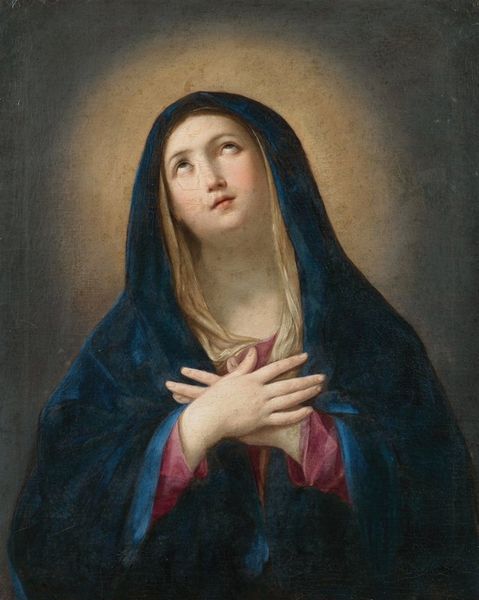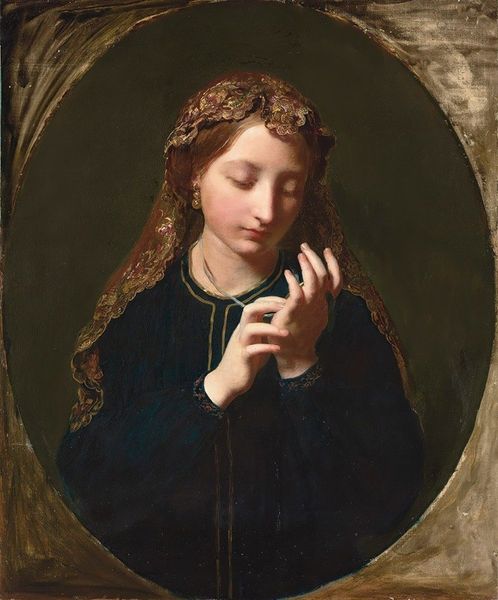
painting, oil-paint
#
portrait
#
venetian-painting
#
baroque
#
painting
#
oil-paint
#
history-painting
Copyright: Public Domain: Artvee
Curator: This captivating image, "The Madonna Facing Front And Wearing A Blue Cloak," is attributed to Giovanni Battista Tiepolo. Executed in oil paint, it embodies the elegance of the Venetian Baroque. Editor: Immediately, it's the serenity that grabs me. That downturned gaze, the soft shadows... it feels profoundly introspective. Almost as if we’ve caught her in a moment of private meditation. Curator: The Madonna's downward gaze is a potent symbol of humility and contemplation, a key element within Marian iconography. The blue cloak, ultramarine, signifies her purity and connection to the divine. Editor: It's more than just symbolism for me. It's the colour itself. That striking blue against the gentle pinks and reds creates such an ethereal atmosphere. It almost feels like she's radiating an inner light. And the folds of her cloak—it's like they are liquid. Curator: Yes, and consider how the history of blue as pigment influences our reading. Ultramarine was created by grinding the semi-precious stone lapis lazuli. Historically its cost made it reserved for the most important parts of a painting. Her ultramarine cloak underscores her sacred nature but would have registered her elevated status in the picture for viewers too. Editor: Art history geek! Just kidding. But it goes beyond cost and meaning. The sheer audacity of the color! I can almost feel Tiepolo relishing the pigment. Did the ready availability of oil paints around that time impact colour usage in some ways? Curator: Absolutely. Venetian painters capitalized on the unique optical effects oil paints made possible, which had a massive effect on baroque painting’s bold approach to color. We have an era and locale famous for pleasure meeting with the eternal and profound. Editor: So, looking at her like this, face on, cloak embracing her—do you think she has a weight she bears in this portrait? It seems to ask something of the viewer… some acknowledgement of the sacred maybe? Curator: That's precisely the aim. Baroque art, particularly religious painting, sought to evoke an emotional response from the viewer. The intention here is for us to empathize with Mary’s quiet grace. To recognise her divine role. Editor: It definitely nudges you in that direction, but I appreciate how restrained it is. Curator: Restrained yes. Evocative definitely. It’s a beautiful reminder that some stories, some images, resonate across time, echoing the depth of human belief and emotion. Editor: Exactly, it reminds us of both personal reflection, and something collective too, some kind of communal imagining. Thanks for drawing my attention to it.
Comments
No comments
Be the first to comment and join the conversation on the ultimate creative platform.
